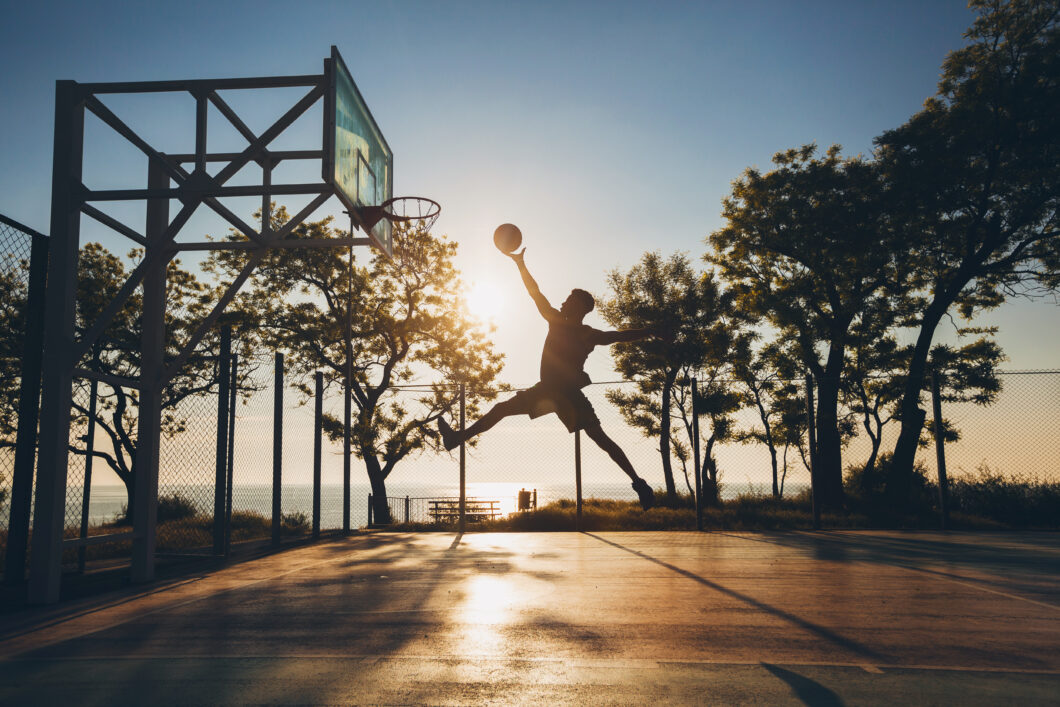Image by marymarkevich on Freepik
In our hectic lives, chaos seems like a familiar companion. For athletes and high-level professionals, packed schedules coupled with daily achievement expectations can make even the most well-organized days feel like a blur. It’s no surprise then that I’m often asked about how to find peace in chaos.
Many people start the day with the right intention but get caught up in a whirlwind of challenges. Not only is this stressful and exhausting, but it also can be distracting making it hard to focus on your goals and/or performance. It can also lead to health issues like trouble sleeping and prolonged stress. Managing your different responsibilities and the variables that go with that, can also take an emotional and mental toll leading to burnout among other mental and physical issues. So, how can you take back control and find pockets of peace?
What does it mean to find peace in chaos?
Finding peace in chaos is about developing the ability to have inner balance and clarity despite what might be going on in your life or any given situation. It’s about developing healthy coping skills that work for your unique lifestyle. It is not the absence of emotion, but rather the ability to manage emotions. For example, recognize what you’re feeling and thinking so that you can redirect yourself back to stability and grounding.
Quite possibly the best way to describe peace in chaos is to think of it in terms of nature. Some might describe it as the eye of the hurricane. If you’re not familiar with hurricanes, the eye is located in the middle of the storm and is completely and totally calm. In the eye, it’s as if there is no storm around it. This is a great example of peace in chaos. We want to learn to live with chaos all around us while remaining the calm center in the middle of it all. (George Mumford, a mindful performance coach who I consider to be one of my greatest mentors, talks about this concept at length in his book, The Mindful Athlete.)
Finding peace in chaos goes beyond merely seeking moments of calm amidst turmoil. It involves cultivating a mindset through training and tools that allow you to navigate challenges with equanimity and resilience. It’s a lifelong journey where your formal mental training and the application of the practice in your day-to-day life (i.e., informal practice) come together to help you think and feel as clear and balanced as possible.
The benefits of learning how to cultivate peace in stressful situations include:
- Staying calm and grounded while being productive
- Staying centered during stressful and busy times
- Calming down while playing a sport or in high-pressure situations
- Inner balance pre-game, during your performance, and post-game
- Maintaining a clear mind
- Level-headed decision making
- Staying focused
- Better sleep
- Improved mental health
- Stress management, which also helps your physcial body
Why is it important to find peace in chaos?
It’s important to learn how to find peace in chaos because the majority of our days, regardless of what we are doing, are unpredictable and out of our control. It’s beneficial to learn how to be calm, cool, and collected so that we make the best decisions possible and operate with a clear mind. This sense of balance can also help you manage stress, which has mental and physical benefits and therefore can enhance your performance.
Naturally, a sense of mental peace is usually easiest at the very beginning of your day. But, how about when you’re in a stressful situation or need to perform at your best? Can you get back to being centered?
Learning how to mentally (or even emotionally) regroup is the number one key to any elite athlete and high performer. The mental game is why many high-achievers hire mental performance coaches.
How do you get peace in chaos?
Mental training is the only way you can learn how to regain your composure when things go awry. It is also your best offensive move because as the saying goes, your best defense is your offense. In other words, it’s better to be proactive than reactive.
3 Simple Steps to Generate Inner Peace in Chaotic Moments
- Know yourself. Know what makes you upset, stressed, or throws you off balance. This awareness will help you in moments when you feel your buttons being pushed because you can notice what’s going on and see it for what it is.
- Acknowledge and redirect. When you are aware that you’re feeling stressed, anxious, or unfocused, the next step is to acknowledge what is going on. Then, you can redirect your attention.
- Take the next best step. This might be as simple as redirecting your self-talk from thinking negatively to what you need to do in the moment. The goal is to refocus on what’s really important right now.
Here’s what this looks like. You might be in the middle of things feeling chaotic or not going as planned. Take a deep breath. Notice if you’re having a negative thought or negative reaction to what’s going on. Decide that you’re going to regain control by letting go of what you can’t control. Take another deep breath. Decide what your next best step is in the moment.
Everyday Example: This is a somewhat simple situation, but relatable for many people. The other day I was driving to a boxing workout class. The teacher recently moved the class time up, and because I have a baby at home, I can’t leave for class until my husband gets home. There’s usually plenty of time, but with the new class time, there’s not much wiggle room for delays. Well, I left a few minutes later than I wanted and there was a huge traffic jam. I noticed I was getting really stressed and anxious about being late for class because I had to get through traffic to get there and find parking. Plus, I really hate being late. I know this about myself. So, I had to talk myself through it. It’s okay if I’m late, I’ll still get a good workout in because I always give my best effort. I can’t control the traffic. Also, I can’t see what’s ahead of me, so maybe traffic won’t be so bad as I go along and I’ll still make it on time. I can’t go back and change the route that I took or the time that I left the house. This went on in a loop in my mind until my nerves started to settle.
Here’s what happened: Not only did I arrive on time, I found parking with no problem, and best of all, I didn’t cause my stress levels to spike, which would have put me in a bad mood and drained what little energy I have these days.
You can see how following the 3-step process is what made the difference between arriving stressed out and angry (and wasting precious energy), and arriving relaxed, energized, and ready for a great workout.
High-pressure Football Confidence Example: A quarterback was playing in a playoff game and it didn’t start out well. In the first series, he threw an interception. The team continued to struggle. Going into the last couple of minutes of the half, the score was 24-3 adding pressure for his team to get points on the board. On the final drive of the half, he overthrew the pass on a fourth down in the red zone. As you can imagine, the defense went wild, the crowd taunted him, and even though his teammates encouraged him, he could sense their frustration. Underneath this lackluster performance, he had been struggling with a lack of confidence, and at one point in his career, considered quitting the game entirely, but instead decided to begin working with a mental performance coach. The past often haunted him during games when he wasn’t playing well. So, even with his mental preparation, the way he began this playoff game could have easily caused his mental performance to slip. What did he do? He trusted his mental training. He didn’t let his negative thoughts or emotions get the better of him. He found a way, despite all of the chaos and pressure, to refocus. He dismissed the negative self-talk and decided to focus on one play at a time. As he did that, his performance improved allowing him to play more calmly and make smarter decisions. He felt more in a flow state because he focused less on the outcome, and more on what he was doing in the moment. His team scored on their first possession in the second half, which helped build his confidence. They went on to pull off the win.
High-pressure Basketball Emotion Management Example: I once worked with a pro basketball player. He was the star of the team. He worked hard not just on his physical game, but also on his mental game. He routinely would meditate prior to games to get into a calm and centered state. However, when the game started, if he wasn’t playing well, or his teammates weren’t playing well, and the team was losing, his emotions began to get the best of him. He would get angry feeling that the team’s performance was his responsibility to correct. This frustration would get him so irritated that he would get into foul trouble and he wouldn’t play well. So, we worked on learning how to apply breathing techniques and mental performance tools during the game to help him refocus and manage his emotions. He did the work on and off the court to bring peace into the chaos he often felt during games. His performance improved dramatically.
This is something that you can do as well. It doesn’t have to be a long drawn-out process, but it does require your effort and willingness to adopt a new way of approaching challenging situations.
Are you ready to start creating your peace in chaos habits? Let’s work together.

